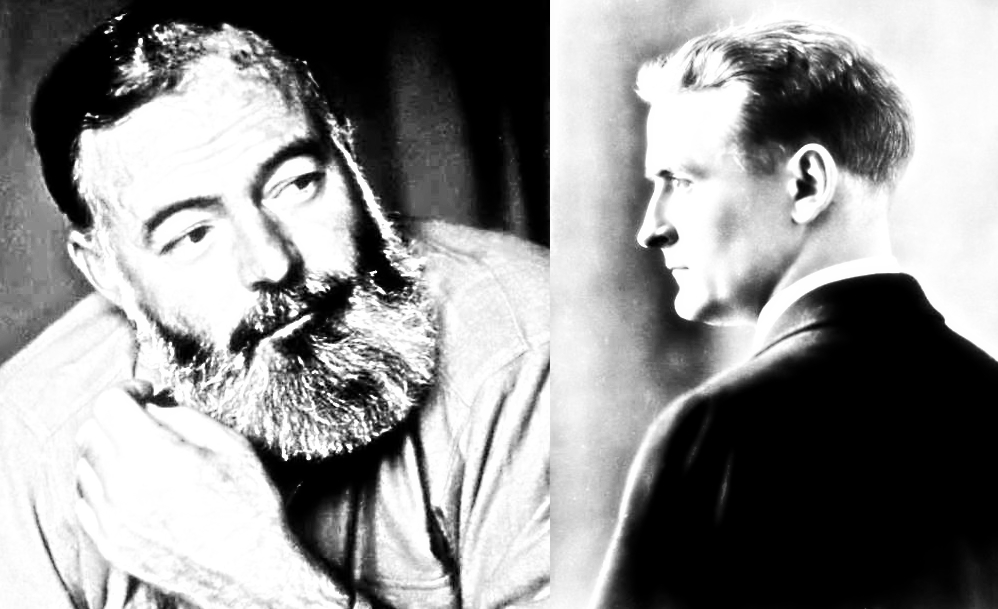Hello, and happy post-Halloween!
As we venture into the Holiday festivity-laden months of the year, I thought it would be topical to write about the ands and the buts of the world. For instance, I have to put up my Christmas tree and the lights and bake cookies and have a great time while completing these objectives.
Of course, I am referring to using polysyndeton in writing, which is a really interesting skill to pick up to change up your writing for a few reasons aa I will explain later.
Today, we are going to define polysyndeton, see a few examples, and then analyze the do’s and dont’s of using this skill in your own writing.
Definition
To begin, a working definition of “polysyndeton” is the “repetition of conjunctions in close succession” (Merriam-Webster). The repetition of of conjunctions creates a sort of rhythm that allows readers to stop and focus on the moment.
Furthermore, we can look at the etymology of the word, which comes from Ancient Greek and is a combination of poly (many) and syndetos (bound together). Therefore, polysyndeton in application is using “many” conjunctions “bound together” by ideas or statements in a sentence.
As stated by some sources: “The primary effect of polysyndeton is to slow readers down so they can take in all the information.” Likewise, polysyndeton creates emphasis in “endless continuity” for each of the particular ideas or items listed in a sentence, and so, “rhythmically, polysyndeton is not only an equalizer of meaning, but also an equalizer of tempo” (UHV).
Examples
In the next section I have provided three examples from three famous authors. I have italicized the conjunctions to show where they are using polysyndeton.
- Ernest Hemingway
One example of polysyndeton comes from Ernest Hemingway’s “A Farewell to Arms,” which is about Frederic Henry’s experience as an ambulance driver during WWI in Italy.
He describes the setting:
“People lived on in it and there were hospitals and cafés and artillery up side streets and two bawdy houses, one for troops and one for officers, and with the end of the summer, the cool nights, the fighting in the mountains beyond the town, the shell-marked iron of the railway bridge, the smashed tunnel by the river where the fighting had been…”
Here, we have Hemingway placing emphasis on the setting of this particular section of text and what was there in equal displacement of meaning. No one thing is given more attention than the other, but we are drawn to his exact descriptions of the area around him.
- Stephen King
In Stephen King’s Misery, author Paul Sheldon is trapped with the deranged maniac Annie Wilkes, and finds himself confined to a bed as a prisoner unable to walk or leave.
In this scene, Annie cleans a mess in the corner of Paul’s room:
“He lay in the bed with his legs making shapes like broken branches under the coverlet and cold sweat running down his face in little slow creeks, he lay and watched as she crossed to the corner and set the bucket down and then picked up the pieces of the bowl and took them out and came back and knelt by the bucket and fished in it and brought out a soapy rag and wrung it out and began to wash the dried soup from the wall” (King).
In this excerpt, King is slowing the reader down to show the meticulous nature of Annie Wilkes. Her homicidal obsession is deranged indeed, so the movements she goes through to maintain order in her own mind and life is calculated and deliberate. The horror of this moment is relevant to Paul and shows the reader Annie’s deliberate actions to clean the mess he made, which cues us in to how she sees him as a petulant child.
- Cormac McCarthy
In Cormac McCarthy’s Blood Meridian, a gang of killers hunt and murder Indigenous Americans on the United States-Mexico Border. In this scene, the protagonist (“The Kid”) looks for some food in a blighted setting:
“He found a clay jar of beans and some dry tortillas and he took them to a house at the end of the street where the embers of the roof were still smoldering and he warmed the food in the ashes and ate, squatting there like some deserter scavenging the ruins of a city he’d fled” (McCarthy).
Not only does McCarthy’s style intentionally slow us down, but it also draws our attention to the horror juxtaposed against the mundane. In this case, collecting beans and tortillas over the smoldering ruins of a house where people once lived.
Do’s and Dont’s
Here are a few things to consider when using polysyndeton in your own writing:
- Make sure you are using polysyndeton intentionally. As with most writing techniques, accidentally employing a tactic will more than likely create confusion for the reader. I remember submitting a short story that had an unintentional use of polysyndeton in the first paragraph, and among the numerous edits the magazine sent back was: “Why are there so many conjunctions in your first paragraph?”
- Try not to overuse polysyndeton because you think it sounds cool. If I had one criticism for Cormac McCarthy or Ernest Hemingway, it sometimes feels like they themselves could slow down and better explain or describe a setting or a character or a moment with more detail rather than pushing through it with numerous conjunctions for effect.
- Remember to go with writing that sounds the best and writing that does the best job conveying your message in text. Some sound advice for a budding writer is this: If it sounds good, it is good. Thus, don’t employ writing tactics that will obfuscate or confuse the reader.
Conclusion
In summations, polysyndeton is the use of conjunctions to create a rhythm while slowing the reader down to pay attention to what is happening in the passage. In our examples, we saw uses of polysyndeton to show setting, to ramp up the horror, and to show contrast. As such, there are many ways to use polysyndeton effectively. However, remember that we should be making choices as writers, we should always take time to describe (show don’t tell), and we should always choose what’s best for our writing and what is going to get the job done effectively.
Works Cited
Hemingway, Ernest. A Farewell to Arms. Scribner, 1929.
King, Stephen. Misery. Viking Press, 1987.
McCarthy, Cormac. Blood Meridian. Vintage International, 1992.
“Polysyndeton.” Merriam-Webster. Web. https://www.merriam-webster.com/dictionary/polysyndeton
“Polysyndeton and Asyndeton.” University of Houston-Victoria. https://www.uhv.edu/curriculum-student-achievement/student-success/student-resources/e-p/polysyndeton-and-asyndeton/







